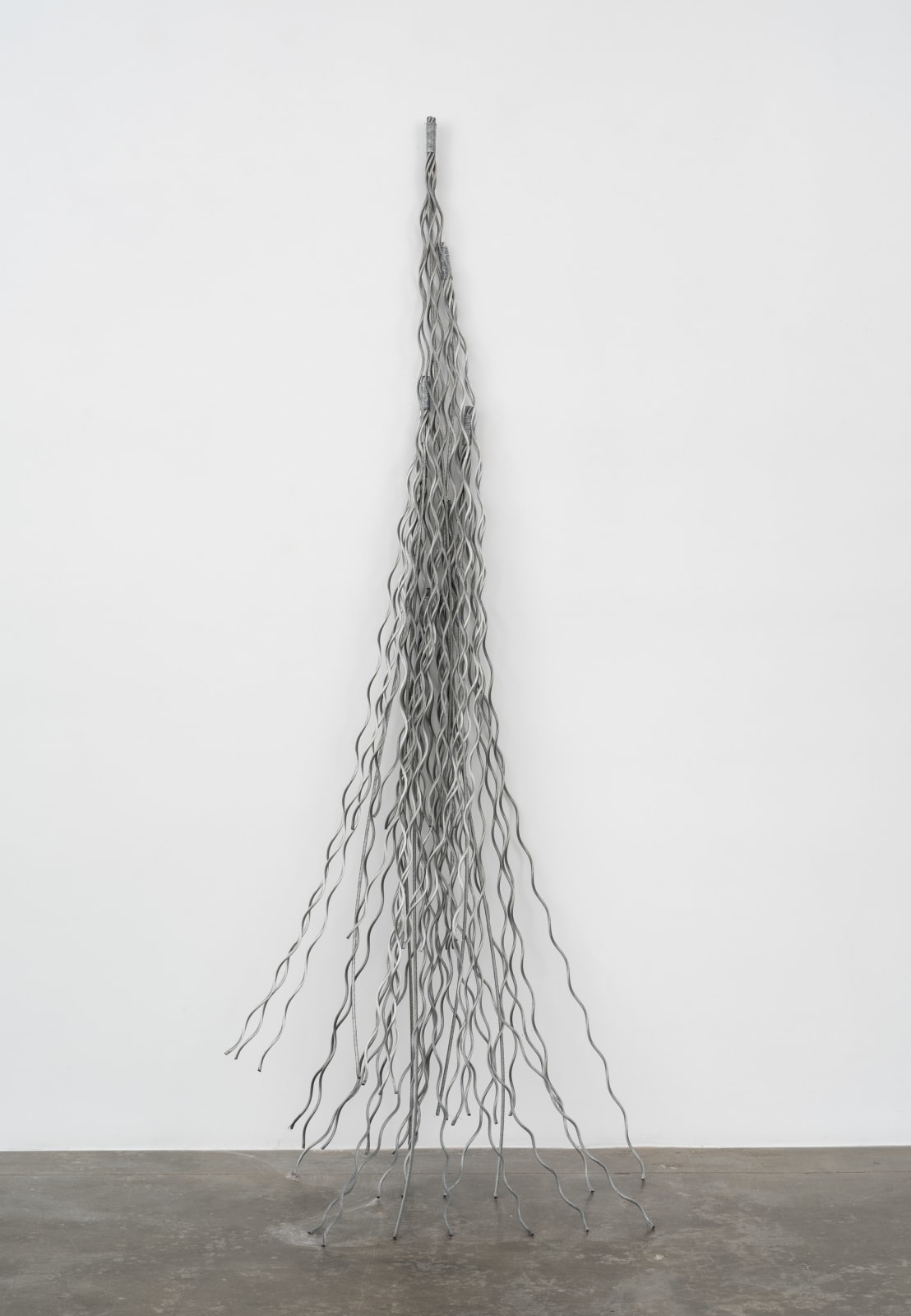MAREN HASSINGER
Falls II, 2025
Galvanized wire rope and galvanized steel wire
97 x 34 in.
(7 Units)
(7 Units)
Copyright The Artist
Photo: Adam Reich
Maren Hassinger (LA, 1947 - ) displays her signature materiality in the form of wire rope, continuing her work in the transposition of the natural world. This new work is...
Maren Hassinger (LA, 1947 - ) displays her signature materiality in the form of wire rope, continuing her work in the transposition of the natural world. This new work is distinctly fluid, echoing forms, patterns, and movements found in natural phenomena, in this case inspired by waterfalls.
"The paradoxes inherent in Hassinger’s work are readily apparent. Her imitations of nature are both sincere and ironic. She manipulates industrial wire rope to look like natural forms, yet these objects also retain their metallic, unnatural quality. The process of creation is quite evident, and in this sense, Hassinger’s work is akin to process art. Viewers can easily reconstruct the nimble movement of fingers and tools fraying, unraveling, shaping, and arranging. Although there is sometimes the suggestion of the decay, neglect, or displacement of natural forms - the result of human activity - these works also strongly insist on the constructiveness of human touch. Some critics, and even the artist herself, have described her works as expressing a sense of memory, nostalgia, or even mourning for the loss of a closer experience of nature". - Maureen Megerian for Women’s Art Journal, 1996
"The paradoxes inherent in Hassinger’s work are readily apparent. Her imitations of nature are both sincere and ironic. She manipulates industrial wire rope to look like natural forms, yet these objects also retain their metallic, unnatural quality. The process of creation is quite evident, and in this sense, Hassinger’s work is akin to process art. Viewers can easily reconstruct the nimble movement of fingers and tools fraying, unraveling, shaping, and arranging. Although there is sometimes the suggestion of the decay, neglect, or displacement of natural forms - the result of human activity - these works also strongly insist on the constructiveness of human touch. Some critics, and even the artist herself, have described her works as expressing a sense of memory, nostalgia, or even mourning for the loss of a closer experience of nature". - Maureen Megerian for Women’s Art Journal, 1996



